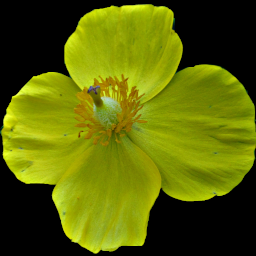
Weird little flowers that pop out of the ground almost pre-bloomed, while the leaves are still forming themselves.




After a while, the plants start to lose their color and the leaves start to unfold, and the plants look more like ordinary denizens of the temperate woods.
For more pictures, see the Caulophyllum thalictroides reference page.













